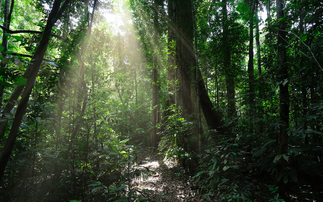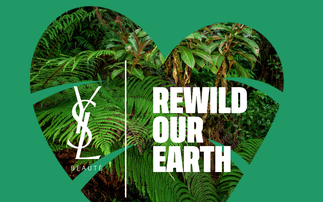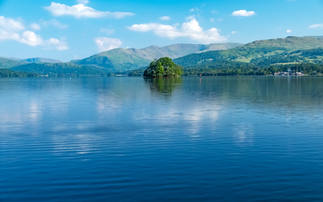From natural capital accounting and nature based solutions to vertical farming and net zero strategies, a suite of policies are emerging to help businesses support SDG15 and protect life on land
Every business is inevitably dependent upon - and has impacts on - ecosystems, biodiversity, and the land. Whether it is a small business with a position in its local community or a global business with supply chains that encompass the world, no organisation treads so lightly that its impact on life on land is invisible. In contrast, all businesses sit within a complex web of trade, supply chains, and economic activity that shapes the land everyone relies on and invariably impacts on the other species with which humanity shares the planet.
As has been well documented, these impacts are reaching, and have arguably surpassed, crisis levels. Forest loss continues at an alarming rate. Species are being declared extinct with horrifying frequency. And the economic losses and climate impacts that are resulting from deforestation, soil erosion, and pollution continue to rack up. The Global Footprint Network calculates that human civilisation is now "using nature 1.75 times faster than our planet's ecosystems can regenerate, [consuming resources] equivalent to 1.75 Earths".
The aim of SDG15 is to curb these outsized impacts and pioneer a sustainable development model that allows a modern and prosperous global economy to co-exist with all other forms of life on land. But when every business and every decision has an impact, and everyone is ultimately dependent on the environment, it can be extremely difficult for an organisation to work out how best to support SDG15, especially when it is often unclear as to how the complex matrix of dependencies and impacts will play out. Plenty of businesses will want to support the goal in principle, but they will be understandably bemused over where best to start.
However, there is a growing body of thought on how best to measure and minimise environmental impacts, before then developing strategies that can actually enhance the health of life on land. And is so often the case with any business programme, it often starts with measuring what is going on currently.
"Business both impacts and depends upon nature," says James Macpherson, head of the natural capital and ecosystems services practice at Anthesis. "All economic activity is ultimately dependent on value derived from nature, and the survival of nature depends on the decisions and actions of businesses. If both nature and the economy are to thrive in the long term, businesses must integrate nature into their decision making. To do this, we must provide relevant, reliable and useful data on natural capital impacts and dependencies."
There are a number of frameworks that can help companies to understand and report on the issues, such as the Natural Capital Protocol, which sets out a four-point approach for companies to adopt.
The first thing to do is to frame the problem, Macpherson advises. "Think about why your business should care about nature," he says. "What are your dependencies and impacts on ecosystems and biodiversity? What could that mean for your business?"
The next step is a scoping exercise to list those impacts and dependencies, and then businesses need to measure these factors, in order to establish a baseline and so they can gauge their progress.
Finally, organisations need to "work out what to do with the results", Macpherson says. "Identify business risks and opportunities and how to act on those, whether that is managing your own operational impacts in areas such as water use, developing payments for ecosystem services or creating new products or services that can address these issues," he recommends.
As with so many SDGs, collaboration is crucial, says Gudrun Cartwright, environment director at Business in the Community. Many of the actions to address problems are place-based, focused on specific locations, which provides an ideal impetus for co-operating with other stakeholders, and for addressing multiple Goals. "Often, you're talking about very fragile ecosystems, whether that is the Lake District in the UK or Lake Naivasha in Kenya," she says. "The health of waterways and land are inextricably linked. You can't separate them. The place itself can bring people together to act."
SDG 15 also ties in closely with the move towards net zero economies, as announced by the UK and a number of other economies. Almost half of global GDP is now generated in places where authorities have set or are proposing to set a target of bringing carbon emissions to net zero by 2050 at the latest, according to the Energy and Climate Intelligence Unit (ECIU).
As such, there is a huge opportunity to integrate net zero and nature and habitat protection strategies. "As the push for net zero intensifies, there is going to be much more of a focus on sinks and restoring nature through the planting of trees and mangroves," predicts Cartwright. "Businesses are going to be thinking about the best places to invest to create resilient carbon sinks. As people start to think more systematically about this, it will become more of an issue."
But ultimately it is an issue that will need to be wrestled with. "To get to net zero, we need to invest in nature-based solutions to climate change," Cartwright points out.
The net result is a daunting body of work for any business. "Companies need to think about the whole value chain, putting some consideration into what happens at end of life, using more circular economy techniques and thinking about how to restore the health of the ecosystems they interact with," adds Cartwright.
In essence, businesses need to completely reimagine how they measure value, manage supply chains, and assess risks, all while taking proactive steps to curb impacts through every part of their value chain. However, despite the scale of the challenge encouraging examples of best practices are emerging - sometimes from unlikely sources.
In the wake of the Netflix series Our Planet, WWF produced a film called Our Planet, Our Business, which calls on business to follow five principles to restore nature and help build a stable future for the planet.
The first is to go zero carbon. "Successful businesses will embrace the clean technologies that now exist to replace fossil fuels," it says.
Next is to minimise the space an organisation uses. "Sustainable businesses will help us reduce our impact on land, employing new technologies to produce as much as possible from as little as possible, growing crops on already deforested land, logging and managing forests selectively," it says. The disruptive potential of technologies such as vertical farms or lab-grown meat, not to mention the rise of flexitarian diets and the emergence of smarter, more livable cities, all point towards a massive opportunity whereby businesses could play a critical role in freeing up vast swathes of land for rewilding and enhanced ecosystem services.
Future businesses should respect the ocean as a resource that belongs to us all, only taking what we can naturally replace, WWF adds, while also working to eliminate waste across their operations. "Next generation businesses will design their product lines to fit within circular economies," the charity points out. Again, the potential for innovative and well managed businesses to directly reduce impacts on land and habitat by building more circular resource flows is obvious. Many businesses are pursuing such strategies already, often without linking new circular business models to SDG15.
Finally, and perhaps most profoundly, WWF argues that business needs to reimagine what success means, decoupling prosperity from growth. "One of the most damaging elements of today's society is the quest for perpetual growth at all costs," the campaign group argues. "A reinvented model of 'business as usual' will allow us to thrive and grow sustainably, adapting within the finite world around us."
Whether the global capitalist economy needs to be overthrown, reinvented, or reformed to protect life on land remains a topic of fierce debate. But one thing is indisputable: businesses need to tread much more lightly on the land, and there are encouraging technologies and techniques that suggest they can do so.








